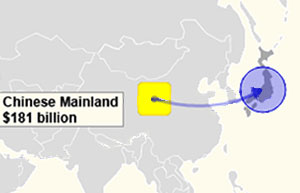Volvo's China export plans mark new phase in Geely strategy
(Agencies) Updated: 2014-06-23 17:22Changing gears
Volvo eventually would export about 10,000 S60Ls and a few thousand XC90s each year from China, the executive said. The company sold about 62,200 vehicles in the US market last year, all made in Europe.
Volvo felt it could minimise foreign exchange risks by adding China as a production base, despite consumer concerns about the quality of made-in-China products, the executive said.
"The dollar and the yuan have the best relationship, a more stable relationship than the euro and the dollar," he said.
|
 |
 |
One plant in the southwestern city of Chengdu began producing the S60L sedan late last year, and the second is ramping up production of the XC90 in the northeastern city of Daqing.
Volvo global head of media relations David Ibison confirmed that the company would start exporting from China although he said the timing and target markets had yet to be decided.
Ibison said that although Volvo's China sales had grown 35 percent year-on-year so far this year, selling 90,000 cars in 2014 could be "a step too far".
The carmaker's focus is to make sure "our growth is profitable and sustainable," he said from Volvo headquarters in Gothenburg.
On the sales front, the senior executive said Volvo sales in China were likely to jump by almost 50 percent on-year to more than 90,000 vehicles in 2014, making the country its biggest market ahead of the United States.
That is well above the 80,000 cars Volvo initially projected to sell this year. The company sold a total of 427,840 vehicles globally in 2013, up 1.4 percent from 2012. "We are satisfied with the progress we've made so far in China," the executive said.
Volvo's two plants in China should be able to achieve full capacity of about 250,000 vehicles a year by about 2018, helping to drive domestic sales, he said.
- PBOC takes more steps to liberalize interest rates
- Qoros 3 Hatch prices announced, taking orders
- Bright Food sees bright M&A options
- CAR embraces CTO of IBM Greater China
- 2014 Auto Shenyang Expo opens
- China to build more granaries
- Chengdu to hold electronics fair in July
- Kawasaki to build LNG tankers in China
















